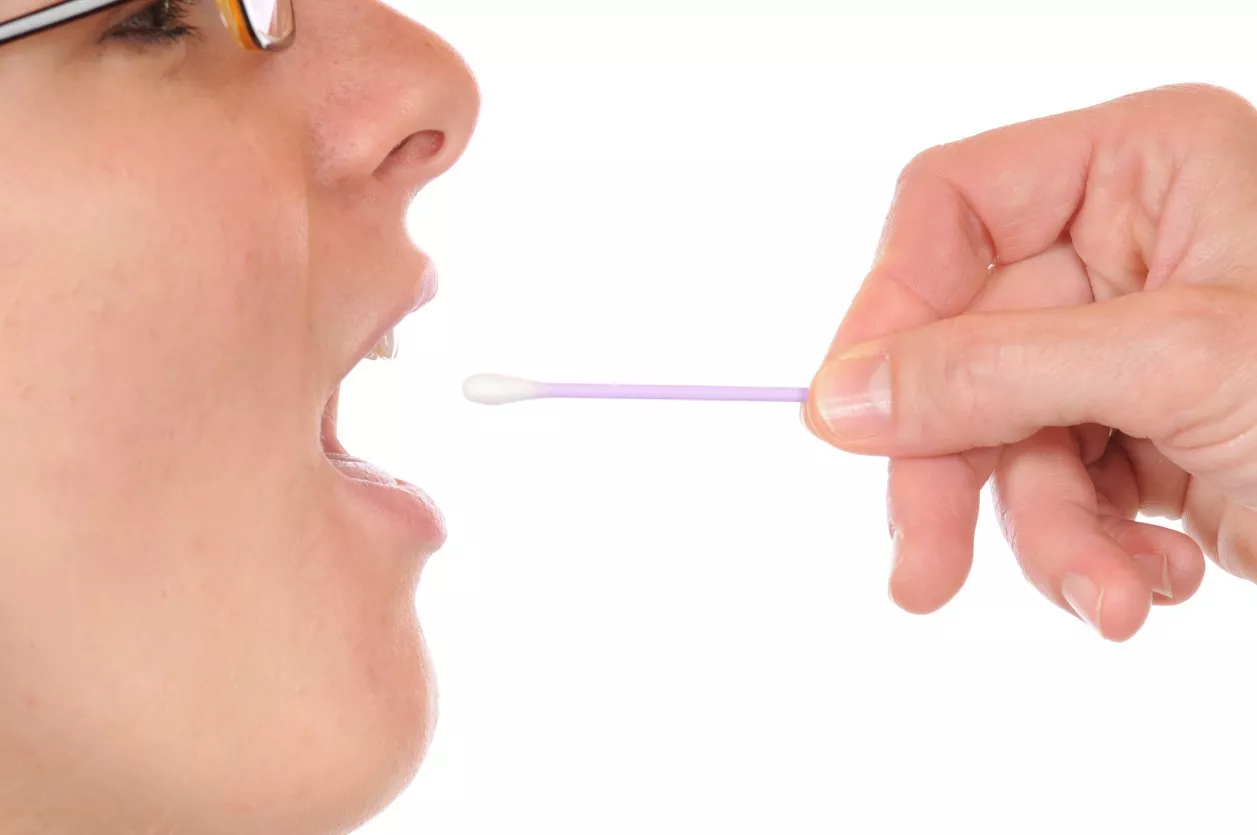
Taking a DNA test can unlock many secrets about your family’s history. People have as many different reasons for taking a DNA test as they do for pursuing genealogy: perhaps they’re trying to find specific information about a particular ancestor or side of the family, or maybe they just want to learn more generally about their backgrounds.
Some may wish to learn about their heritage specifically from their paternal (father’s) side or their maternal (mother’s) side. In this article, we’ll take a look at the various ways you can conduct this kind of research using MyHeritage DNA.
What is maternal and paternal lineage tracing?
Tracing a maternal or paternal line means researching only the direct ancestry of your mother’s line or your father’s line, respectively. That is, if you were researching only your maternal line, you would be looking for information on your mother, her mother (your maternal grandmother), her mother (your maternal great-grandmother), and so on. If you were researching only your paternal line, it would be your father, his father, his father, and so forth.
There may be a number of different reasons why you might choose to research your family this way. For some genealogists, it’s a matter of simplifying things — with each generation exponentially larger the further you go back, it may be easiest to stick to just one specific line. Others may be seeking information about some form of inheritance that may only be passed down through the father or the mother — certain tribal or religious identities, for example, or noble titles.
Whatever your reason for researching your maternal or paternal line specifically, taking a DNA test can certainly help — but which DNA test should you do? What type of DNA test is best for tracing maternal or paternal ancestry?
Different types of DNA tests and what they tell you
There are several types of DNA tests available commercially today. The three most common types are autosomal DNA, Y-DNA, and mitochondrial DNA (mtDNA).
An autosomal DNA test examines only the autosomes — that is, the chromosomes in your DNA that are not sex chromosomes. These chromosomes contain DNA code that was inherited from both of your parents in random combinations. So an autosomal DNA test won’t necessarily tell you which parent passed on a particular DNA sequence. However, because it covers a much wider range of DNA than the other types, it is the only kind that provides a comprehensive list of DNA matches from both sides of the family.
A Y-DNA test examines the genetic code located on the Y chromosome, which is only found in biological males. Since this chromosome is inherited exclusively from the father and never from the mother, the DNA analyzed on this type of test will give you information that is specific to the paternal line in your family. Of course, one downside is that this test can only be done on people who are biologically male.
A mitochondrial DNA or mtDNA test examines the genetic code located in the mitochondrion. Most of our DNA can be found in the nucleus, or center, of a cell, but some of it is located in a different part of the cell called the mitochondrion. This part of the cell is almost exclusively passed from mother to child. This means that a mtDNA test can give you information that is specific to the maternal line in your family.
Can a woman trace her paternal DNA?
Yes — even though a person who is biologically female can’t take a Y-DNA test, she has two options for researching her paternal line through DNA:
- Autosomal DNA test: As mentioned above, autosomal testing casts a wider net and is not restricted by biological sex
- Y-DNA test for a male relative: They can test a male sibling or cousin who has the paternal lineage they are researching (the son of her father’s brother, for example)
What type of DNA test does MyHeritage offer?
MyHeritage offers the autosomal DNA test, because this type of test has the greatest value for genealogists.
When the Science team at MyHeritage developed our DNA test, they carefully considered which of these types of tests to offer. Our main goal as a company is to help people connect with their family’s pasts and explore their genealogy. The information one can obtain through a Y-DNA or mtDNA test may be fascinating, but it is quite general, and the matches these tests identify represent only a narrow sliver of your relatives. Many genealogists find a lot more value and importance in casting their DNA match net as wide as possible, because it is DNA Matching that helps genealogists solve mysteries and break through brick walls in their research. Additionally, in most cases, with a little detective work and some good DNA tools, the autosomal test can do everything for genealogy that the Y-DNA and mtDNA tests can do.
In light of this, we made the decision to offer an autosomal DNA test only.
What this means is that when you take a MyHeritage DNA test, you will receive an Ethnicity Estimate and a comprehensive list of DNA Matches from our global database. You will not receive a breakdown of which DNA you inherited from which parent.
However, that doesn’t mean you can’t use your DNA test results to help you learn about your maternal or paternal lines. In fact, using the DNA Matching and MyHeritage’s advanced DNA tools, you may be able to determine exactly which ancestors you have in common with a given DNA Match, and you may even be able to tell which sections of your DNA came from a particular side of your family. By combining all the tools MyHeritage provides with your autosomal DNA results, you can learn a lot more about your family than you would learn from a Y-DNA test or a mtDNA test alone.
Using MyHeritage’s advanced DNA tools to identify paternal or maternal DNA
The key to using MyHeritage DNA to identifying paternal or maternal DNA is triangulation: comparing your DNA to that of your relatives to see which sections of DNA you all have in common.
Chances are, you have a few family members who you recognize in the MyHeritage DNA database. If so, you can use the Chromosome Browser to compare your DNA with that of these known family members. (If not, consider giving a DNA test to a few of them as a gift so you have more material to work with!)
So for example, if you compare your DNA to that of your first cousin on your father’s side, you will easily see which sections of DNA you share — and these are most likely sections that you inherited from your father.
Do note, however, that it’s possible that the DNA you share wasn’t inherited from your father’s parents, but rather from a common ancestor much further back. This is especially true among endogamous populations, such as Ashkenazi Jews or Low German Mennonites, in which individuals tended to marry only within their relatively small community.
One way to confirm that the shared DNA segment was inherited from a more recent ancestor is to compare both of your DNA to that of another relative on your father’s side. Again, these sections could have been inherited from a less recent ancestor, but with each additional match who has the same triangulated segment, the likelihood that that segment was inherited from your father increases.
Click here to learn more about how to use the Chromosome Browser for genealogy.
Another MyHeritage tool you may find handy is AutoClusters. This tool takes your DNA Matches and groups them according to shared DNA. That is, it creates a chart where you can see which of your DNA Matches are related to each other. If you find an unknown DNA Match in a cluster with a known relative, this means you likely share a common ancestor with both of them. You can then head back to the Chromosome Browser and compare your DNA with that of these matches.
Click here to learn more about how to use AutoClusters.
The Theory of Family Relativity™ feature can help in the same way: by providing a plausible theory as to how you are related to an unknown DNA match, and therefore, helping you understand whether that match is on your mother’s or your father’s side.
Click here to learn more about using the Theory of Family Relativity™.
Can I figure out which ethnicities I inherited from each of my parents using MyHeritage DNA?
While there’s no way to tease out exactly what percentage of each ethnicity you inherited from which parent using an autosomal DNA test, looking at your DNA Matches can give you some valuable clues. When you visit your DNA Match list, you can filter your results by ethnicity. Take a look at which matches show up in your list when you filter by a particular ethnicity. Are they mostly on your father’s side or your mother’s side? Or does there seem to be fairly equal representation from both?
You can also enter the Review DNA Match page for your known matches and note the Shared Ethnicities section. Which ethnicities are showing up on your father’s side, and which on your mother’s?
Click here to learn more about filtering, sorting, and reviewing your DNA Matches.
Combining DNA with genealogical information
At MyHeritage, we believe that the most accurate and valuable way to learn about your family is using a combination of all the tools at your disposal. That’s why we have integrated the data from your DNA test with the rest of the information you can learn via MyHeritage tools: the family trees and historical records. By using these tools in combination, you can get much farther in your research than you’d be able to using each of them on their own.
For example, when you’re looking at a particular DNA Match and trying to figure out how you may be related, the most straightforward answer would come from a family tree that that DNA Match (or whoever is managing that person’s kit) has built on MyHeritage. By looking at their tree, you can easily identify ancestors you have in common and trace your relationship path. Historical records can help you confirm these relationships and verify that the other person’s tree is accurate.
Conclusion
It may be true that Y-DNA and mtDNA tests would give you information that is specific to your paternal and/or maternal lines. However, the combination of the autosomal test with MyHeritage’s tools and resources can give you richer, more specific, more accurate, and ultimately far more useful information when you’re tracing a paternal or maternal line.
Order a MyHeritage DNA kit today to start your journey of discovery!




